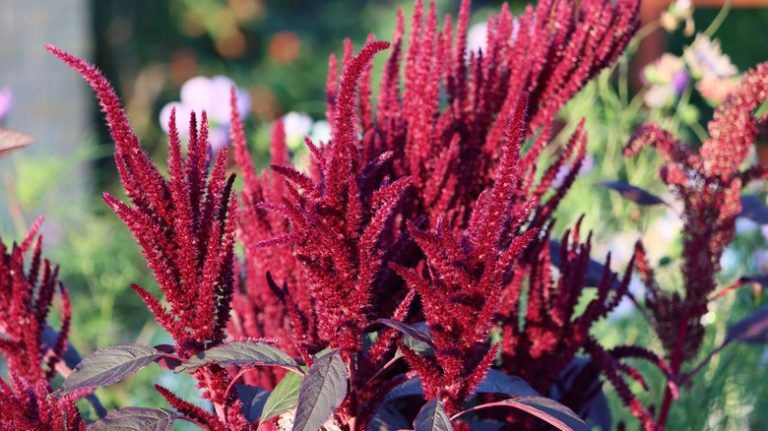We may receive a commission on purchases made from links.
Gardening always varies a little from plant to plant, from perennial to annual, and from vegetable to ornamental. But some aspects of nurturing plants can be simplified by the simple raised bed. And it is simple, but there are a handful of tricks that can make your raised garden as healthy and productive as any garden plot… or even more so.
Whether you’re planting annuals or perennials, vegetables or ornamentals, making raised beds work for you is about managing the work you’re doing in the size of the space you have to work with, so tips that maximize moisture, soil quality, and plant happiness are the order of the day. These alternative gardens aren’t a half-measure compared to a “real” garden; plants have the same needs in a raised bed as in traditional garden soil. But the good news is that a small hack here and there can have a big impact in such a compact area.
Start by getting the soil right
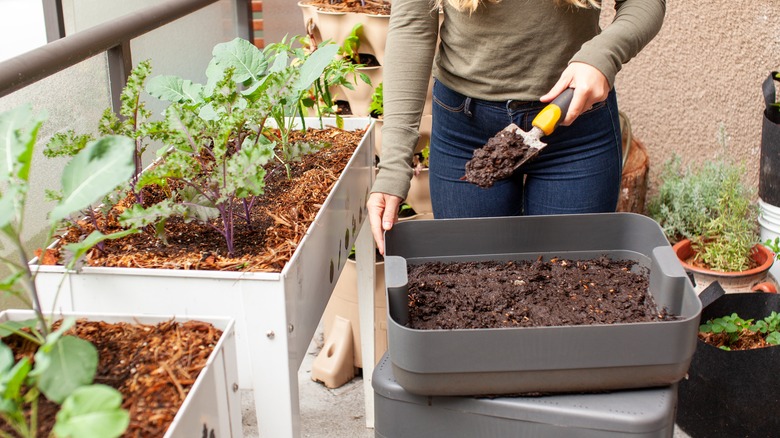
Whatever benefits you’re looking for in raised-bed gardening, the important thing to remember is that you’re isolating your plants in a box with some soil, and that soil needs to be very good at its job. Creating your garden in raised beds is like putting it on a little island, which means it can’t exchange moisture and nutrients as easily with the surrounding ground, if at all. You can help by amending the dirt with moisture-retaining elements like vermiculite, peat moss, and coconut coir. You might also consider an irrigation system — but more on that in a bit.
Nutrients are best provided via compost, and micronutrients are present in most garden soil. However, if you depend heavily on bagged soil, you’ll need to supplement with micronutrient-rich fertilizers. Raised bed plants also need some help with soil structure, since it won’t be naturally inherited from their surroundings. On the whole, what you’re looking for is a loose, flaky texture that is moist but drains well enough never to be waterlogged. The deeper this structure runs, the better. Adding organic material like well-composted food, lawn and leaf waste, etc., is usually your shortest path to improving soil structure.
Try an irrigation system
Although they’re not as challenging as container gardens, because raised beds dry out easily, you will need to water them fairly frequently. Commercial installations are massively complex arrangements of underground pipes, great vaults containing automatic valves, and things popping up all over the place of their own volition. But drip irrigation and soaker hoses can be set up perfectly with little expense and no experience. And they will do a better job than you can with a hose, watering can, or a sprinkler. Sprinklers tend to waste water by misdirecting much of it, but soaker hoses and drip irrigation get directly to the heart of the matter: delivering water to your plants’ roots.
For a raised bed, keep it simple. To use a soaker hose, just buy a kit that will walk you through the installation steps. If you only have one or two raised beds, you can keep things simple by laying the drip hose in the bed and then connecting your regular hose to the end of it. Turn on the spigot when you want to water the beds. Plus, you don’t have to have a dripper for every plant in your bed; just place them where they can do as much watering as possible.
Companion plants get along
eurobanks/Shutterstock
Garden plants often have a friends list and an enemies list, and sticking the wrong combination together can cause disease, nutrient deficiencies, or even chemically inhibit each other’s growth. Let’s look at the tomato, for example. Broccoli, cauliflower and cabbage will compete for the same nutrients as tomatoes. This is also true of interplanting potatoes, which are, like tomatoes, members of the nightshade family and will fight for the same nutrients. Black walnut trees actually emit a toxin called juglone that can inhibit or kill competing plants, including tomatoes.
Canadian celebrity gardener Carson Arthur calls the tomato/bean feud “the West Side Story of the garden.” But the plants are actually compatible and, in fact, nitrogen-loving tomatoes benefit from the nitrogen-fixing beans. The trick is to let the tomatoes get established before introducing the beans. Otherwise, they’ll end up in a battle for space that won’t benefit either plant. For the most part, though, the plant friends list promotes health and vigor. In terms of companion planting, tomatoes repel asparagus beetles, and in turn asparagus wards off nematodes that damage tomato roots. Similarly, chives reduce the number of nematodes, as well as mites and aphids. And marigolds, a common flower in vegetable gardens, can reduce the number of thrips that damage tomato plants.
Keep a notebook
Zsv3207/Getty Images
Taking care to plan your raised beds carefully requires, in some cases, being mindful of what was planted in a particular space the previous year. This is where a thorough garden journal comes in handy, and you might just find a hidden pleasure in keeping track of these things in a good, old-fashioned notebook. You can keep track of companion plantings, information critical for crop rotation, details about which pests and diseases were problematic in your garden, which plants did particularly well, and ideas for the garden’s future. Jot down pH and other soil test information, and keep track of the number of each variety you planted and some details about your harvest.
One of the most useful garden journal habits is to sketch your raised beds and the location of plants within them. Be as detailed and as colorful as you feel the desire to be. It’s not only a calming, meditative activity, but it can be useful. Next year, for example, you might want to recall exactly where you had tomato plants because they tend to strip the soil of calcium, which you’ll need to replenish more aggressively anywhere a tomato previously grew.
Make room between plants for tools
nieriss/Shutterstock
We tend to think of raised bed gardening as a hands-on proposition, but when things start going a bit wild in mid to late summer, you’ll be glad you’ve left yourself room to run your favorite hoe or cultivator between plants. That often means planting in rows, even if you can’t really tell there are rows from a few feet away.
Unless you’re using a method like square foot gardening, rows often make sense in raised beds. Being able to get to weeds or work the soil with a tool can make all the difference in a raised bed. These little islands leave no room for weeds to steal away nutrients, while keeping the soil friable and well-drained will also improve the ability of compost, fertilizers, and water to get to the plants’ roots. Just keep in mind that raised bed tools like hand trowels and garden forks will tend to be shorter than garden variety (ahem), long-handled tools.
Save time and weed less by mulching
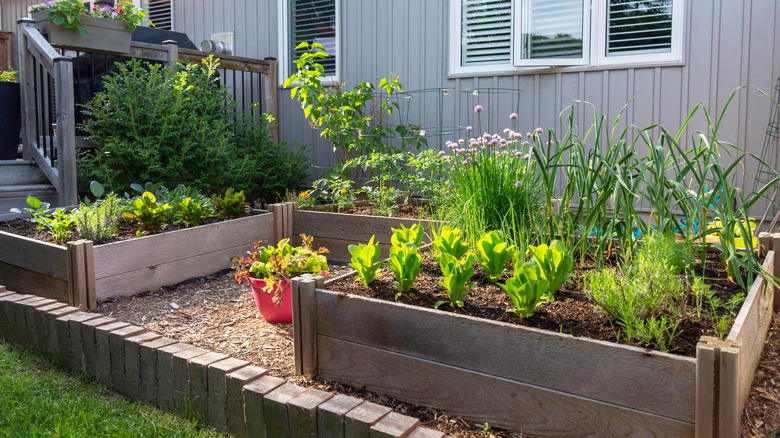
Joanne Dale/Shutterstock
Because raised beds are more susceptible to drying out than topsoil and garden soil, it’s a good idea to mulch your plants. Mulching will also reduce the amount of weeding you’ll need to do. But wait… doesn’t wood-chip mulch deplete your garden soil of nitrogen, negatively affecting your plants? Linda Chalker-Scott of Washington State University calls this concern “mulch ado about nothing” and reassures gardeners that wood mulch is okay. She cites the common notion that the temporary depletion that might take place near the soil’s surface would actually act to keep weeds down, and wouldn’t affect the deeper roots of established plants.
Another way mulch keeps weeds at bay is purely mechanical: A nice, thick layer of mulch will be difficult for many weed seedlings to make their way through. It adds nutrients to your raised bed’s soil, and its presence can keep moisture from evaporating… a particular concern for raised-bed gardeners. And this same process will also delay bolting in vegetables that end their productive season by going to seed. Moisture and reduced temperatures keep many plants from reacting to the signs, like hot soil, that normally trigger bolting.
Don’t step on your raised bed soil
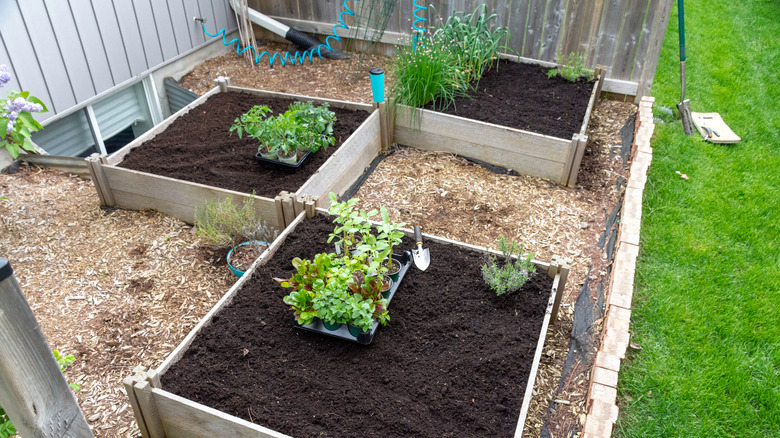
Joanne Dale/Shutterstock
Your raised beds should be no more than three feet wide so that you can reach any part of it without stepping on the soil. This is important because adding all your weight to a footprint will compact the ground, affecting most plants negatively. Good soil structure is mostly about having sufficient air spaces, which are beneficial for helping water and gases like oxygen reach your plant’s roots. Air spaces also give those roots room to grow easily, and you never want to make root growth a struggle.
One way to minimize the need to step into and compact your raised bed soil is to be sure you don’t build it too wide. Four feet is about as wide as you want to make a raised bed since anything wider will make reaching the center of the bed difficult. There are also designs like the keyhole raised bed that include spaces allowing you to reach any part of the soil. It’s more of a U-shaped bed, allowing you to reach the center easier.
Consider protecting your plants from below
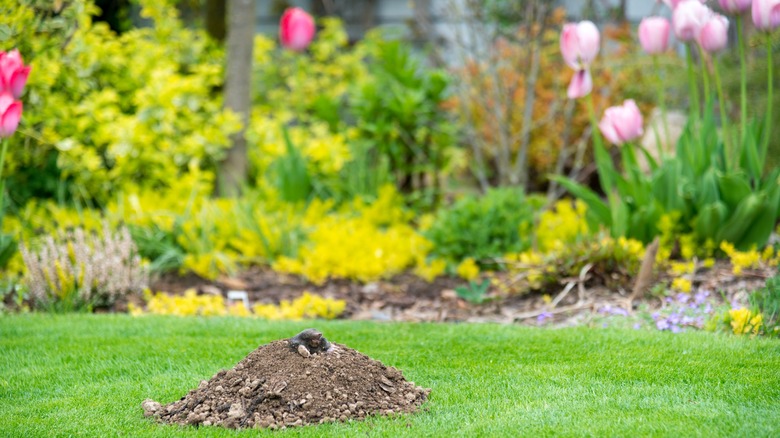
kubais/Shutterstock
If your raised bed sits atop the soil or your lawn or garden, it’s a good idea to defend the bed against burrowing animals that might feast on your plants’ roots. The best way to do this is to use galvanized hardware cloth. Hardware cloth is a welded mesh with squares as small as ¼-inch, and livestock raisers often use it to reinforce areas you don’t want predators entering. In the same way, it can keep moles, voles, and other underground pests from reaching your plants from below. Since you’ll want to completely enclose your raised bed from below, you might need to join two or more lengths of hardware cloth together. Some experts recommend “sewing” the pieces together with galvanized wire, but clamping the pieces together with wire rabbit cage clips (via Amazon) is usually sufficient and a great deal easier.
There are some concerns about using galvanized steel in contact with garden soil. Most experts seem to agree that, while the leaching of zinc and other metals into the ground is possible, it’s not generally a concern unless your soil is particularly acidic.
Put plants in the right place
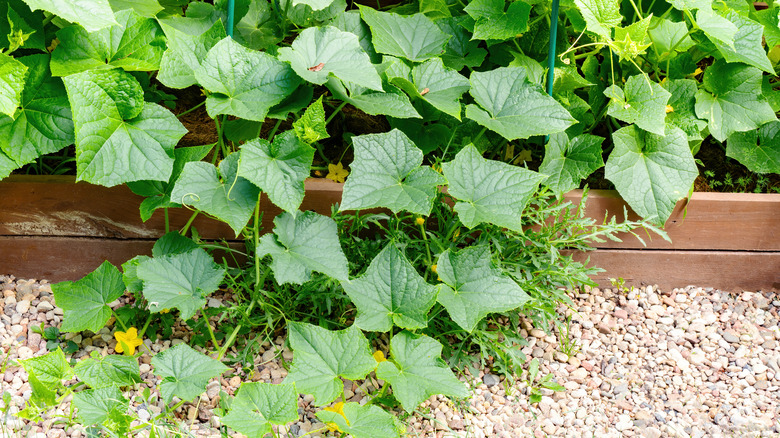
nieriss/Shutterstock
Even in a raised bed, it’s important to consider the habits of each plant before deciding where to place them. Don’t let taller plants shade out shorter ones, for example. To manage this, you’ll need to know the north-south orientation of your raised bed. Step your plants up in size as you move north across the planter. On the northern end, you can add a trellis to allow climbing plants an opportunity to maximize their sunlight.
Vining plants like some cucumbers can be planted along the edges of the bed so they have a little room to spread out outside of the raised structure. There’s no sense in taking up all that precious soil just to have cucumber plants lying on top of it. But note that you’ll find it difficult or impossible to mow around the vines, so you might consider putting a length of landscaping fabric outside of your raised beds.
Use cover crops
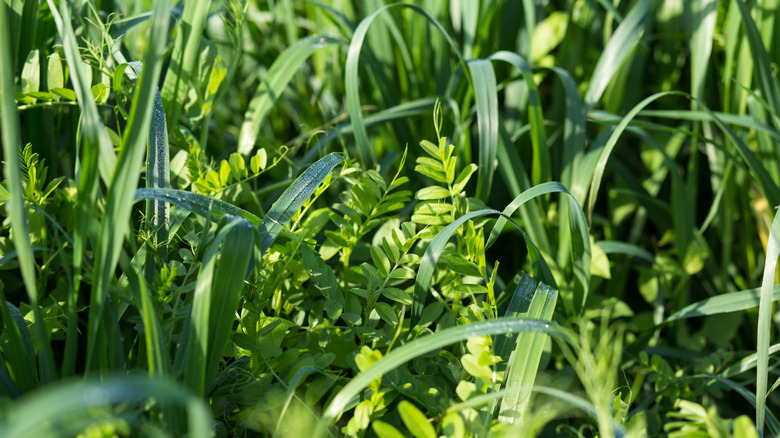
Sergiy Akhundov/Shutterstock
You might think of cover crops as something farmers do in huge fields, but your raised beds can benefit in exactly the same ways. Planting clover and vetch can provide nutrients, hold your soil in place, and fix nitrogen for the coming year. Because of how some of the cover crops’ benefits work, they’re effective even in the smallest raised beds. They provide habitat for beneficial soil microbes and increase the diversity of those microbes. However, cover crops mainly cover your soil, keeping it hospitable for beneficial insects, worms, and microbes, and minimizing erosion.
Consider using daikon radish as a cover crop. Daikon has all of the benefits mentioned above, and effectively tills and aerates your soil as deep as six feet. And while you should compost or work in most of your daikon crop to enrich your raised bed soil, these radishes are also tasty and are a common pickled treat in some Asian cuisines.
Take advantage of low tunnels or other covers
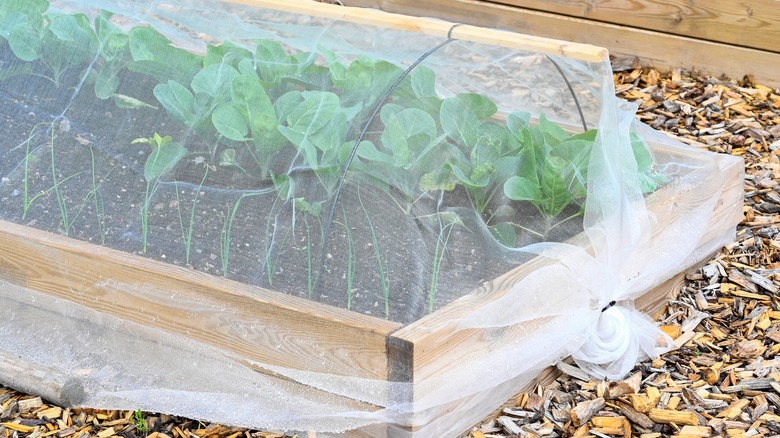
Jonas Rönnbro/Getty Images
If you want to get an earlier jump on spring planting or extend your gardening later into fall, adding a cold frame or low tunnel to your raised bed could provide the magic you need. Because raised beds isolate your soil, these covers can warm the ground more quickly and maintain a higher average temperature more easily. You’ll sometimes see black plastic row covers warming the soil in commercial nurseries, but experts agree that clear plastic is more effective. They are 10 degrees warmer than black plastic and 15 to 20 degrees warmer than uncovered soil.
Agricultural supply manufacturers make a wide range of materials that can be used in row covers to protect crops from hail, cold temperatures, insects, and intense heat. These include shade cloths, greenhouse plastic, woven fabrics like Agribon, unwoven fabrics like Reemay, and others. You can also get inventive. Tulle makes an effective row cover against insects, so if you find a deal at your fabric store, why not give it a try?
Low tunnels are effectively small greenhouses that are non-permanent, inexpensive, easy to construct, and beneficial for making your growing season a bit longer. Low tunnels are 3 to 6 feet wide, and you can install them before planting, but they can make working the soil difficult, so keep an eye on the timing of your low tunnel construction.
Harvest early and often
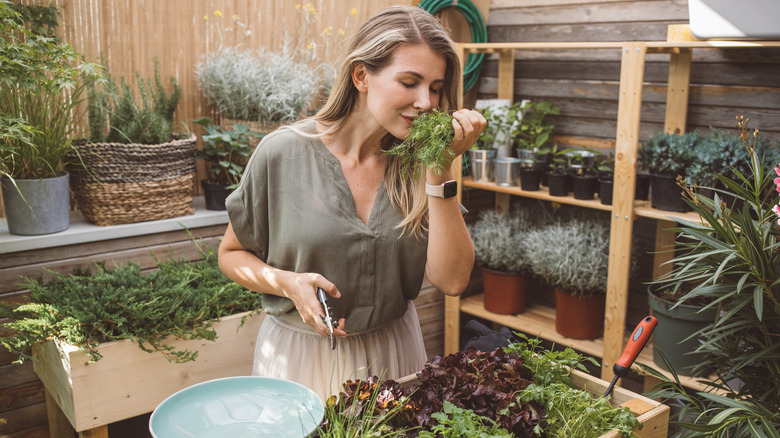
Svetikd/Getty Images
To keep your plants growing productively, harvest before you really need to. Removing your plants’ fruits when they are on the smaller size and removing leaves from leafy vegetables keeps the plant from behaving as if it’s done for the year. This can prevent some plants from bolting. Herbs can also be made more productive by harvesting early and frequently, but take care not to just remove a few leaves. The method for increasing herb productivity is a lot more like pruning, and the specific technique varies by herb.
At some point, of course, your plants will be done for the season no matter how you fight against it. If a crop is finished and it’s well before the end of the growing season, take heart: You can always remove the spent plants and plant quick-growing varieties like arugula, bok choy, cilantro, lettuce, radishes, and spinach for a solid harvest before fall planting.


